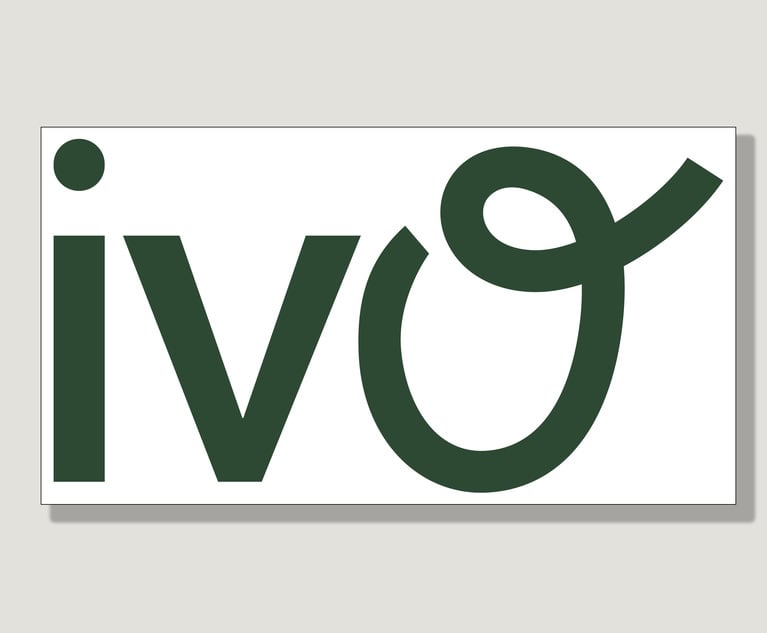Five Things California Lawyers Should Know About New Ethics Rules
What to know? The rules don't specifically mention lawyers serving clients in the marijuana industry. In most cases, lawyers can't sleep with their clients. Conflict of interest rules are broader and less case-specific. And more.
May 11, 2018 at 03:42 PM
4 minute read
 The California Supreme Court on Thursday released the first comprehensive changes to the rulebook in 29 years.
The California Supreme Court on Thursday released the first comprehensive changes to the rulebook in 29 years. The wait is over, California lawyers. The latest Rules of Professional Conduct have arrived.
After years of drafting—including one forced restart—and almost 14 months of review and rewriting by the California Supreme Court, the high court's seven justices on Thursday released the first comprehensive changes to the rulebook in 29 years. The revised rules, based largely on ABA model rules with heavy seasoning by California laws, go into effect Nov. 1.
By the numbers: The court approved 27 amended rules as a state bar committee submitted them. Justices modified and authorized 42 more. And they rejected entirely one proposed rule on a lawyer's obligations to clients “with diminished capacity.”
The ethical roadmap for California's 250,000 attorneys covers 112 pages. It was approved by all seven justices.
With its hefty size, the revamped rulebook contains plenty of changes for lawyers to love, hate and debate. But two lawyers steeped in the drafting work gave the finished product generally high marks.
“The court did a good job and they did a careful job,” said Richard Zitrin, a legal malpractice and ethics specialist at San Francisco's Zitrin Law Office. “But the court could have taken more of an affirmative role and done an even better job.”
Mark Tuft, a Cooper White & Cooper partner who served on the rules-writing committee, said the changes align California more closely with legal standards across the country. “It's a major step forward. And it offers much greater consumer protection than what we currently have,” Tuft said.
Here are five things lawyers should know about the new rules.
➤➤ Conflict of interest rules are broader and less case-specific. For example, a new definition of what constitutes a legal “matter” covered by conflict disclosure and non-representation requirements is more expansive now. Tuft called the changes “much more conforming and much more inclusive” of how lawyers nationally understand conflicts of interest.
➤➤ Prohibitions on harassment, discrimination and retaliation by lawyers, both in the workplace and in the practice of law, have been expanded. The rule, the subject of intense debate during drafting, requires “all law firm lawyers the responsibility to advocate corrective action to address known harassing or discriminatory conduct by the firm or any of its lawyers or nonlawyer personnel.”
The state bar can now open an investigation into alleged harassment or discrimination without a triggering civil finding by another agency. Lawyers who receive a related disciplinary charge from the bar will be required to notify state and federal workplace-fairness agencies. “It's frankly as broad as about any rule in the country,” Tuft said.
➤➤ The rules don't specifically mention lawyers serving clients in the marijuana industry. The rules-writing committee sent the Supreme Court a proposed rule—Rule 1.2.1—that would allow lawyers to “discuss the legal consequences of any proposed course of conduct with a client” so long as they don't counsel that client to break the law. Tuft said the high court sent the rule back about a month ago for more work on some accompanying comments but not the language of the rule itself. Tuft said the rule should be applicable to various topics, such as immigration, where federal and state laws conflict.
➤➤ In most cases, lawyers can't sleep with their clients. This rule has received a lot of public attention. Currently, the rules bar lawyers from having sex with clients if the act is coerced or considered a form of payment for services rendered. The new rule forbids lawyer-client sex unless there was a previous consensual relationship.
➤➤ The court nixed a rule laying out a lawyer's responsibilities in representing clients with “diminished capacities.” The justices did not explain the deletion, although they may have decided language dealing with client confidentiality and privacy may have stepped too far into the Legislature's purview. The California Lawyers Association's trusts and estates section had sought more clarity in the rules for attorneys practicing in this field.
We've posted the new rules below:
This content has been archived. It is available through our partners, LexisNexis® and Bloomberg Law.
To view this content, please continue to their sites.
Not a Lexis Subscriber?
Subscribe Now
Not a Bloomberg Law Subscriber?
Subscribe Now
NOT FOR REPRINT
© 2025 ALM Global, LLC, All Rights Reserved. Request academic re-use from www.copyright.com. All other uses, submit a request to [email protected]. For more information visit Asset & Logo Licensing.
You Might Like
View All
Pistachio Giant Wonderful Files Trademark Suit Against Canadian Maker of Wonderspread
4 minute read
Hogan Lovells, Jenner & Block Challenge Trump EOs Impacting Gender-Affirming Care
3 minute read
Gen AI Legal Contract Startup Ivo Announces $16 Million Series A Funding Round

PayPal Faces New Round of Claims; This Time Alleging Its 'Honey' Browser Extension Cheated Consumers
Trending Stories
- 1January Petitions Press High Court on Guns, Birth Certificate Sex Classifications
- 2'A Waste of Your Time': Practice Tips From Judges in the Oakland Federal Courthouse
- 3Judge Extends Tom Girardi's Time in Prison Medical Facility to Feb. 20
- 4Supreme Court Denies Trump's Request to Pause Pending Environmental Cases
- 5‘Blitzkrieg of Lawlessness’: Environmental Lawyers Decry EPA Spending Freeze
Who Got The Work
J. Brugh Lower of Gibbons has entered an appearance for industrial equipment supplier Devco Corporation in a pending trademark infringement lawsuit. The suit, accusing the defendant of selling knock-off Graco products, was filed Dec. 18 in New Jersey District Court by Rivkin Radler on behalf of Graco Inc. and Graco Minnesota. The case, assigned to U.S. District Judge Zahid N. Quraishi, is 3:24-cv-11294, Graco Inc. et al v. Devco Corporation.
Who Got The Work
Rebecca Maller-Stein and Kent A. Yalowitz of Arnold & Porter Kaye Scholer have entered their appearances for Hanaco Venture Capital and its executives, Lior Prosor and David Frankel, in a pending securities lawsuit. The action, filed on Dec. 24 in New York Southern District Court by Zell, Aron & Co. on behalf of Goldeneye Advisors, accuses the defendants of negligently and fraudulently managing the plaintiff's $1 million investment. The case, assigned to U.S. District Judge Vernon S. Broderick, is 1:24-cv-09918, Goldeneye Advisors, LLC v. Hanaco Venture Capital, Ltd. et al.
Who Got The Work
Attorneys from A&O Shearman has stepped in as defense counsel for Toronto-Dominion Bank and other defendants in a pending securities class action. The suit, filed Dec. 11 in New York Southern District Court by Bleichmar Fonti & Auld, accuses the defendants of concealing the bank's 'pervasive' deficiencies in regards to its compliance with the Bank Secrecy Act and the quality of its anti-money laundering controls. The case, assigned to U.S. District Judge Arun Subramanian, is 1:24-cv-09445, Gonzalez v. The Toronto-Dominion Bank et al.
Who Got The Work
Crown Castle International, a Pennsylvania company providing shared communications infrastructure, has turned to Luke D. Wolf of Gordon Rees Scully Mansukhani to fend off a pending breach-of-contract lawsuit. The court action, filed Nov. 25 in Michigan Eastern District Court by Hooper Hathaway PC on behalf of The Town Residences LLC, accuses Crown Castle of failing to transfer approximately $30,000 in utility payments from T-Mobile in breach of a roof-top lease and assignment agreement. The case, assigned to U.S. District Judge Susan K. Declercq, is 2:24-cv-13131, The Town Residences LLC v. T-Mobile US, Inc. et al.
Who Got The Work
Wilfred P. Coronato and Daniel M. Schwartz of McCarter & English have stepped in as defense counsel to Electrolux Home Products Inc. in a pending product liability lawsuit. The court action, filed Nov. 26 in New York Eastern District Court by Poulos Lopiccolo PC and Nagel Rice LLP on behalf of David Stern, alleges that the defendant's refrigerators’ drawers and shelving repeatedly break and fall apart within months after purchase. The case, assigned to U.S. District Judge Joan M. Azrack, is 2:24-cv-08204, Stern v. Electrolux Home Products, Inc.
Featured Firms
Law Offices of Gary Martin Hays & Associates, P.C.
(470) 294-1674
Law Offices of Mark E. Salomone
(857) 444-6468
Smith & Hassler
(713) 739-1250






